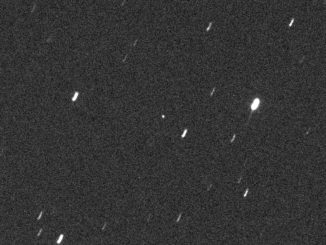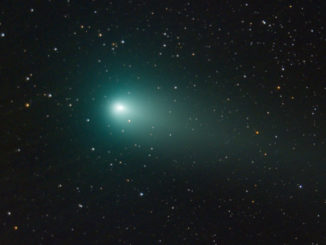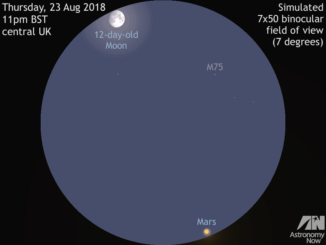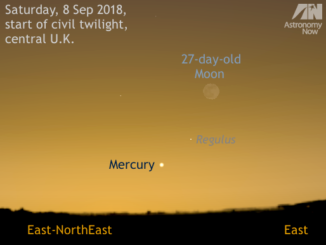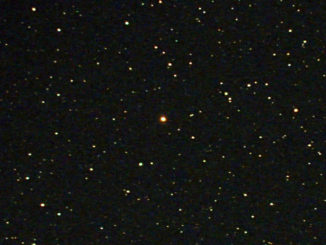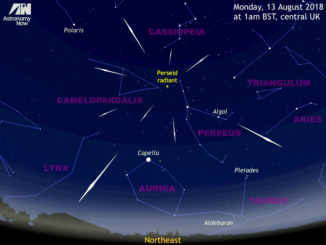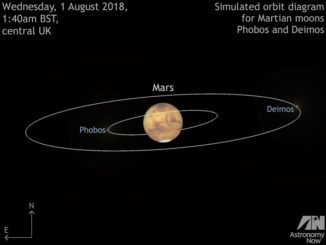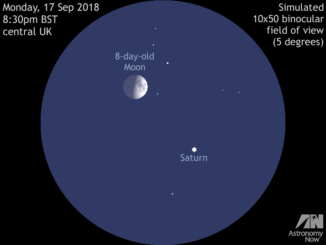
See the Moon and Saturn get close at dusk on 17 September
Skywatchers in the UK looking to the south-southwest at dusk on Monday, 17 September can see the waxing gibbous Moon just 1¾ degrees to the upper left of Saturn, the pair fitting comfortably in the same field of view of binoculars and small telescopes magnifying 25× or less. This is also a good night for spotting Titan, Saturn’s largest and brightest moon.

